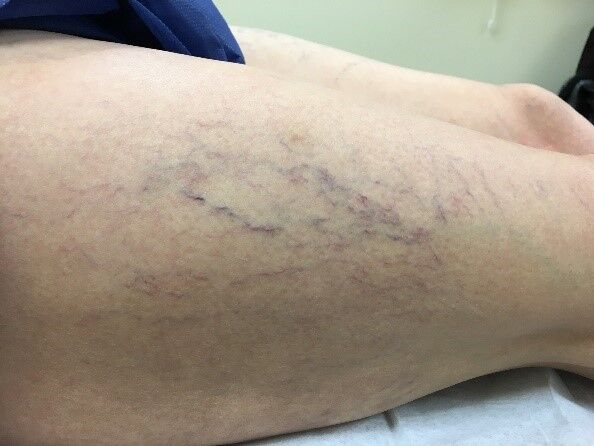
In visual foam sclerotherapy, the physician administering this treatment uses ultrasonongraphy to guide the placement of a needle into the vein that's being treated. A type of medicine called sclerosant is made into a foam and then injected into the problem vein, initiating a reaction that results in vein closure. Blood is then naturally rerouted through healthier veins while the body reabsorbs the closed vein.
Non-surgical, minimally-invasive, and fast, ultrasound-guided foam sclerotherapy is used to remove spider veins further from the skin's surface. In addition to being a wonderful cosmetic option for spider veins, this procedure is also effective in eliminating the physical symptoms of vein disease, such as aches, pains, and fatigue.
This method of sclerotherapy costs less than surgery, requires no hospital stay, and allows you to return to work and normal activities quicker than most treatments. Sclerotherapy generally doesn't require any recovery period, and you'll be able to walk immediately after the treatment. However, we advise you to take it easy for at least a day or two. Bed rest isn't recommended, but you may need to avoid strenuous exercise for a few days after sclerotherapy. Avoid exposing your legs to the sun for the first two weeks after the procedure. Finally, you'll probably have to wear compression stockings for a short time after your treatment.
Foam sclerotherapy can quickly and effectively reduce symptoms and improve the look of the skin. It works in about 80 out of 100 people who have the procedure.
Exercising, maintaining a healthy body weight, and avoiding prolonged periods of sitting or standing will help ensure your vein health following ultrasound-guided foam sclerotherapy.
At Center for Vein Restoration, we understand the impact that spider veins can have on your confidence and comfort. Explore the range of effective spider vein treatment types, from minimally invasive procedures to advanced therapies designed to help you achieve healthy, beautiful legs. Take a step towards vein health and renewed confidence with our treatment solutions offered by caring, experienced, board-certified vein doctors.
Discover how even small changes to your daily routine can help reduce and even prevent the onset of spider veins. Explore the powerful impact of exercise, nutrition, and habits on your vascular well-being, empowering you to take proactive steps toward healthier legs. But remember, lifestyle changes won't eliminate your existing vein condition.
Visual sclerotherapy is used strictly for spider vein treatment. A sclerosing solution is injected directly into the affected veins. This solution irritates the vein lining, leading to the vein walls sticking together and eventually closing off. The body eventually reabsorbs the closed vein, reducing the spider veins' appearance. Visual sclerotherapy is often used for smaller veins and offers a minimally invasive option for improving both the cosmetic appearance and potential discomfort associated with spider veins.